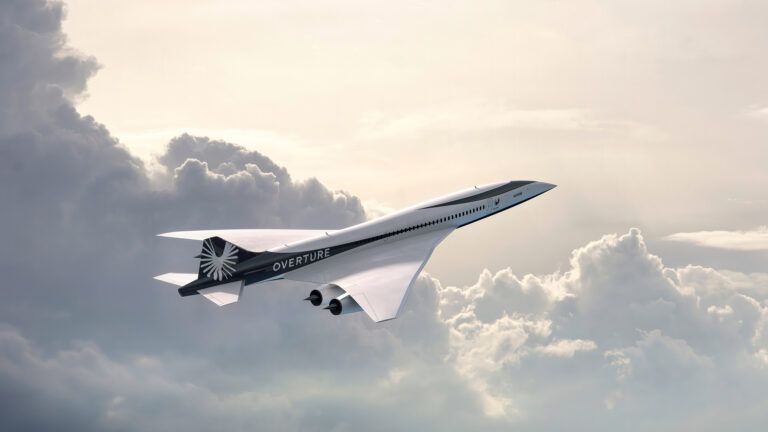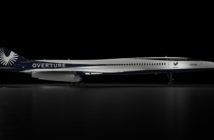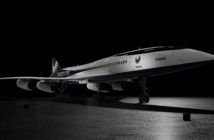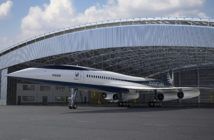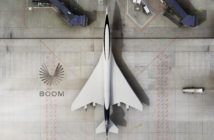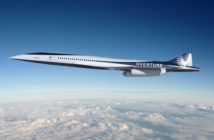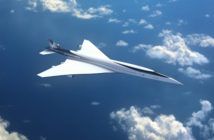Boom unveiled a refined design of its supersonic airliner at the Farnborough Airshow today, shaped by more than 50 redesigns and validated by a series of wind tunnel tests.
The latest production configuration of its 65 – 80 seat Overture airliner features a streamlined fuselage that tapers to the rear and reshaped “gull wings” that provide improved manoeuvrability at low speed while ensuring its cruise speed of Mach 1.7.
The Overture will be 201ft long with a wingspan of 106ft, slightly smaller than a Boeing 737 or Airbus A320 single aisle aircraft. The supersonic airliner will have a range of 4,890 miles (7,870km) and be powered by four engines, which in the latest design have been moved further back along the fuselage to improve safety.
Blake Scholl, CEO of Boom Supersonic said, “We have conducted 26 million hours of simulation and confirmed our design with five wind tunnel tests.
“The intricately tailored fuselage applies a principle called area ruling that significantly improves supersonic efficiency. The new wing design balances supersonic efficiency with stability and control at lower speeds.
“It’s kind of like the Concorde and the 747 had a baby.”
Area ruling is an aerodynamic principle that minimizes drag by ensuring the cross-sectional area changes smoothly along the aircraft from tip to tail.
Other changes include an increase in the wingspan to include flaps and slats which will enable a 20% improvement in low speed aerodynamic efficiency and a redesigned intake and nozzle on the engines to reduce noise. Boom is also developing software-based controls that Scholl said will “dynamically optimize flaps, slats, engine thrust and climb to reduce noise on the ground”.
Boom plans to break ground on its factory later this year and fly Overture for the first time in 2026. Meanwhile the company is continuing to progress work on its one-third scale prototype XB-1 towards flight testing.
Scholl said, “We did XB-1 to learn the lessons that we need to make Overture a success. Overture’s design has been able to evolve based on what we have learnt from XB-1. Most of the team has shifted away from XB-1 to Overture but XB-1 is progressing well with brake tests today and the first taxi tests tomorrow.”
Industry partnerships
Boom also announced a series of supplier and industry partnerships at Farnborough this year. A partnership with US aerospace and defense firm Northrop Grumman will see the two companies jointly develop a special mission variant of Overture for use by the US military and its allies.
“This landmark strategic collaboration will bring the power of speed to the US and its allies around the planet. We see a multitude of possibilities, transporting troops, cargo, for just in time supply chains and rapid response,” said Scholl.
The partnership sees Boom move away from a focus on commercial applications for Overture.
Tom Jones, president of Northrop Grumman Aeronautics Systems said, “We are no strangers to high technology and we are always looking at the best ideas in the commercial sector that will enable critical capabilities for our customers.
“We are excited about the concept of a long range, high speed, high payload capacity airframe that can enable capabilities for our customers. Over the coming years we will be working with Boom to unlock the potential of the defence market.”
Boom also announced supplier partnerships with Safran on landing gear, Eaton on fuel systems and an expansion to its partnership with Collins to cover air data and ice protection.
Scholl added that more supplier partnerships would be announced in the “coming months” for flight controls, structure and propulsion.


